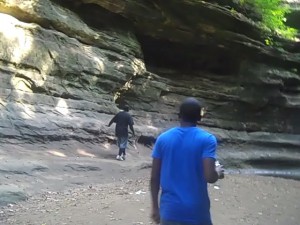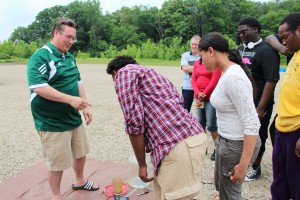Editor’s Note: The following story was written by a student in our Eco Youth Reporters program, conducted in conjunction with award-winning journalist Kari Lydersen, Michigan State University’s Knight Center for Environmental Journalism, and Imagine Englewood If, a youth services organization based in that South Side neighborhood. The Eco Youth Reporters program is generously funded by the McCormick Foundation:
Contaminated fish, sediment and water can be dangerous to one’s health but that doesn’t keep hungry Chicagoans away from the water at Canal Park and the Canal Port River Walk on Ashland Avenue south of Cermak Avenue in the Pilsen neighborhood.
In years past, factories and slaughterhouses used to dump waste in the Chicago River and the canals which connect to it. That contaminated the water and the fish. Pilsen’s coal plant, Fisk, contributes contamination to the water also. It releases lead, mercury, and other contaminants into the air which fall into the river.
Since President Richard Nixon signed the Clean Water Act and Clean Air Act in the early 1970s, factories can’t dump waste right into the river and there are limits on what plants and factories can emit into the air. But there is still a strong possibility of water contamination in the Chicago River because the City of Chicago discharges its sewage into the river, about 1.2 billion gallons every day. The sewage and other industrial waste is only partially treated. Starting in 2014, it will be disinfected to kill viruses and bacteria but right now, that is not done. In 2011, the national group American Rivers named the Chicago River one of the country’s 10 Most Endangered Rivers.
And yet people still fish there. We visited the area where the Chicago River meets the Chicago Sanitary and Ship Canal at Canal Park on a muggy afternoon in early August. Near a grove of huge trees, I met Scott, a 34-year-old man who asked his last name not be used and who regularly fishes in the shallow, calm water flowing through this spot. I asked him some questions about river contamination and previous factory dumps.
“I’m not for sure if it’s contaminated but I love coming here for the scenery and I love fishing,” said Scott.
Read more »




